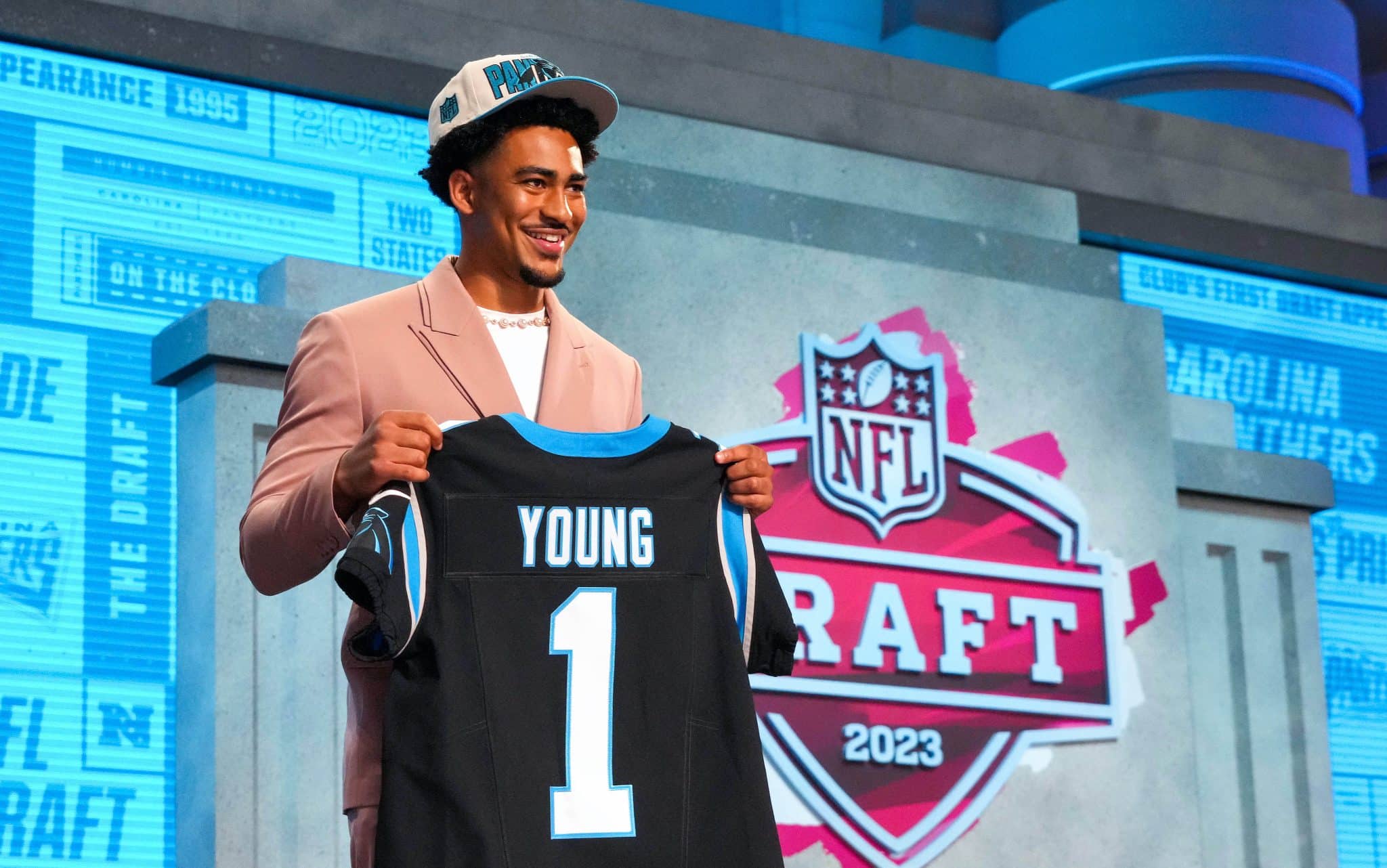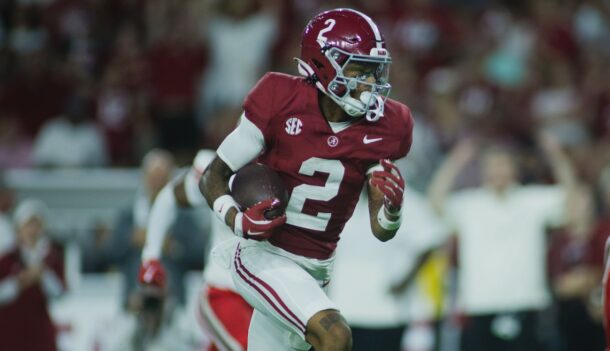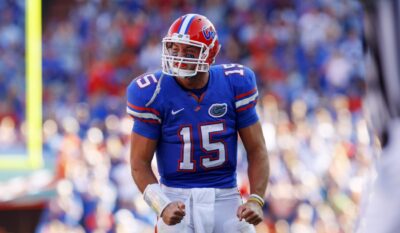
Hayes: NFL Draft offered more proof that SEC is the best QB league in America
By Matt Hayes
Published:
The safest quarterback in the NFL Draft, the biggest question in the NFL Draft.
In the first 4 picks of the night.
Welcome to the 2023 NFL Draft, where the only certainty of the night was the overwhelming trend of the past 5 years: The SEC has become a quarterback league.
Alabama’s Bryce Young went No. 1 overall to the Panthers, and Florida’s Anthony Richardson went to the Colts at No. 4 to give the SEC 2 quarterbacks chosen in top 5 in 2 of the past 4 drafts.
Kentucky’s Will Levis and Tennessee’s Hendon Hooker were projected to be selected in the first round, but neither was. Yet the emergence of the SEC in the NFL Draft at the most important position on the field is undeniable.
In the past 5 years, 5 SEC quarterbacks have been selected in the 1st round, and 9 in the first 3 rounds — 10 if you include Jalen Hurts, who spent 3 of his first 4 college seasons at Alabama, and was a 2nd-round selection in 2020.
Levis and Hooker will more than likely be selected Friday night in the 2nd round, and increase the number of SEC quarterbacks selected in the first 3 rounds to 12 over the past 5 years.
But this night was about the obvious pick of Young as No. 1 overall, and the mega gamble of Richardson in the top 5. The Panthers weren’t scared off by the only negative with Young: his 5-10, 200-pound frame.
They instead zeroed in on a quarterback who lost 4 games in his college career — none of which were of his doing. The Alabama defense couldn’t get stops in last-play losses to Tennessee and LSU in 2022, and to Texas A&M in 2021, and injuries to star wide receivers John Metchie III and Jameson Williams in 2021 cost the Tide in a national championship game loss to Georgia.
Young had a TD/INT ratio of 79/12 over the last 2 seasons, threw for more than 8,000 yards and completed 67% of his passes. But look deeper into the numbers.
Because on 3rd-down throws, Young was lethal. He completed 63% of those throws over the past 2 seasons, including 26 of his 79 TDs.
Of his 106 completions on 3rd down the past 2 seasons, 65% were converted into 1st downs. Those are ridiculous numbers — especially when considering 65 of those 3rd-down completions went for 15+ yards.
Then there’s the other side of the equation: The curious case of Richardson, the diametric opposite of Young in every way imaginable.
He’s the prototypical quarterback size, and a unique athlete the NFL has rarely, if ever, seen at the position. He’s also a gigantic risk.
It begins with his limited experience (13 career starts), and his lack of consistent play over the 2022 season. The numbers tell the story, but it goes much further than 17 career TDs and 9 INTs, and a completion percentage of 53.8.
Those numbers are brutal, and if Richardson weren’t 6-4, 240 pounds with 4.4 speed in the 40, he’d more than likely be a late-round pick — or even an undrafted free agent. The Colts picked on ceiling, on what they believed Richardson could be.
Not what he has been.
“There’s not many players in the history of this game like Anthony Richardson,” Florida coach Billy Napier said Thursday night.
There are plenty in the history of football who put up similar numbers.
Richardson was 6-7 as a starter, and compared to Young’s unthinkably strong play on 3rd down, Richardson’s performance on the critical down has been a big concern.
Richardson completed 48.7% of his 3rd-down throws last season, with 5 TDs and 4 INTs. Of his 38 completions, only 8 were for 15+ yards.
“(Richardson) has found a group that believed in him and wants to build around him,” Napier said.
The emergence of SEC quarterbacks in the NFL Draft won’t end with Young and Richardson.
One NFL scout told me this week that Jayden Daniels of LSU has “an early 1st round grade” for the 2024 draft, and a handful of other SEC quarterbacks could play their way into the 1st round: Carson Beck of Georgia, Joe Milton III of Tennessee and Spencer Rattler of South Carolina.
“The passing game has really developed (in the SEC) over the last 7-8 years,” the scout said. “If you recruit the best players and you annually have the most players selected (in the draft), it was only a matter of time before quarterback became a focal point.”
Matt Hayes is a national college football writer for Saturday Down South. You can hear him daily from 12-3 p.m. on 1010XL in Jacksonville. Follow on Twitter @MattHayesCFB







